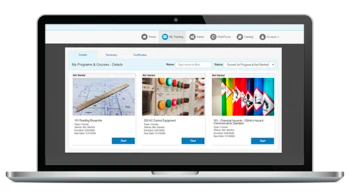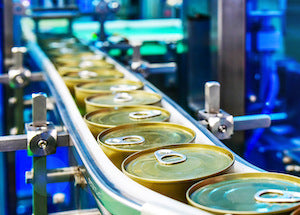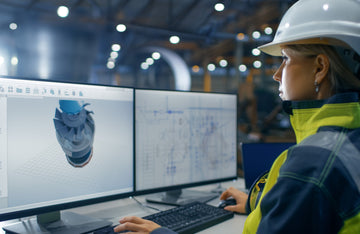Covers maintenance and operation of gate, globe, ball, plug, check, and special-purpose valves. Details actuators and various accessories. Explains valve selection based on application. Describes methods of protecting piping systems. This course has no prerequisites. Valve Maintenance and Piping System Protection is available in online maintenance training and course manual formats.
Lesson 1 - Valve Maintenance
Topics:
Threaded, welded, brazed, and flanged connections; Installing and repairing gate, globe, angle, ball, plug, and check valves
Learning Objectives:
– Discuss the factors that affect the selection of valve materials.
– Describe the various methods of connecting valves to piping.
– Identify the various types of common valves and the operating characteristics of each.
– Explain general maintenance and repair procedures for different types of valves.
Lesson 2 - Special Valves
Topics:
Installation and repair of butterfly, diaphragm, pop safety, relief, pressure-reducing, pressure-regulating, and quick-opening valves
Learning Objectives:
– Identify several types of special valves and the operating characteristics of each.
– Discuss the installation, maintenance, and repair of special valves.
Lesson 3 - Actuators and Accessories
Topics:
Actuator installation, maintenance, and repair; Bourdon tube, bimetallic, and bellows gauges; Flowmeters; Rotating unions; Accumulators
Learning Objectives:
– Explain the function and operation of a valve actuator
– Identify various types of valve actuators and describe the installation, maintenance, and repair of each.
– Discuss the operating characteristics of various accessories, including gauges, meters, accumulators, and air receivers.
Lesson 4 - Valve Selection
Topics:
Valve applications, materials, and identification; Soldered, threaded, and flanged valve connections; Tool selection; Valve positioning
Learning Objectives:
– Name the five major uses of valves in piping systems and identify the types of valves best suited for each.
– Identify and explain the factors that determine the selection of a valve for a given application.
– Identify various valve markings and symbols.
– Describe several types of valve-to-pipe connections.
– Discuss the selection and proper use of tools in valve installations.
– Explain the importance of the correct installation of valves in well-chosen locations.
Lesson 5 - Piping System Protection
Topics:
Installing and maintaining insulation; Steam tracers; Protection from freezing and corrosives; Active and passive protection; Inspection; Supports
Learning Objectives:
– Describe the methods by which heat transfer occurs.
– Discuss the methods of tracing process lines.
– Explain the various methods of protecting piping systems from heat, cold, and corrosion.
– Discuss the installation, inspection, and maintenance of insulation and other forms of piping system protection.
↺ Back to Industrial Mechanical Maintenance Applications Online Training Courses Courses





